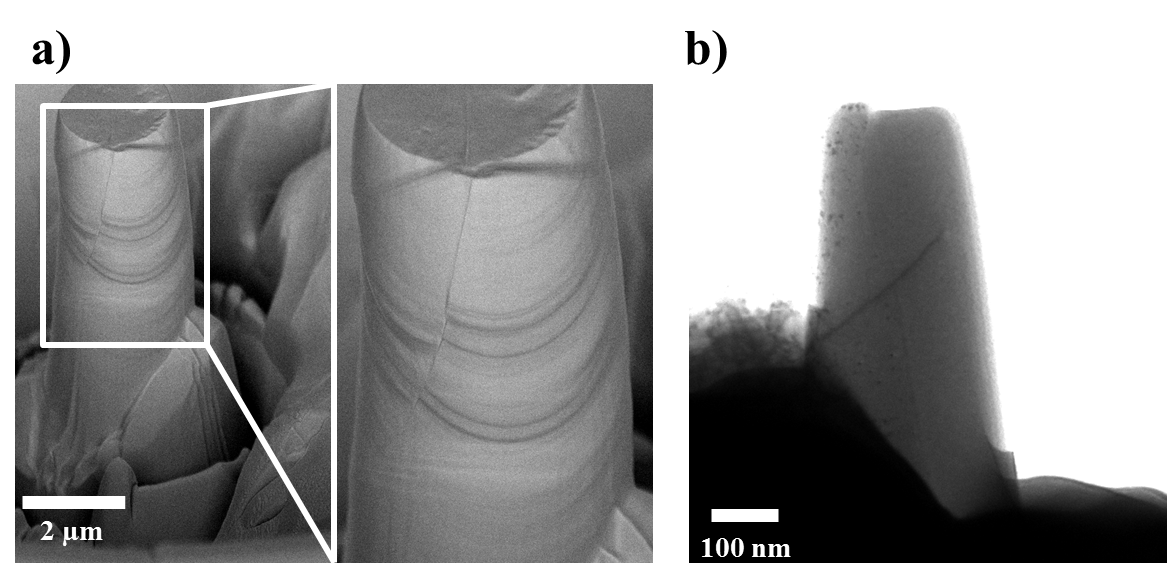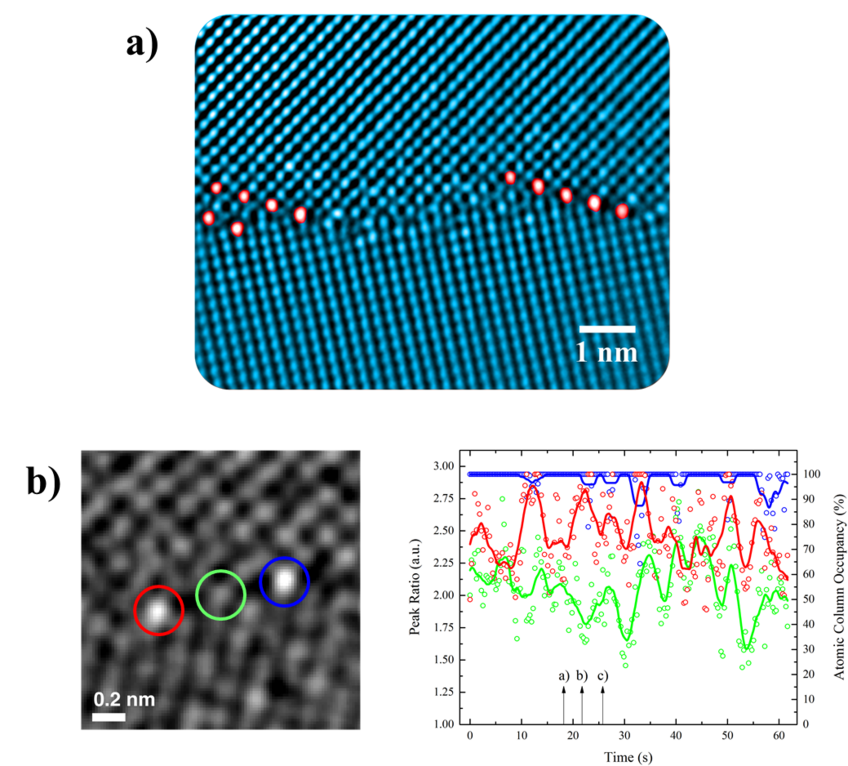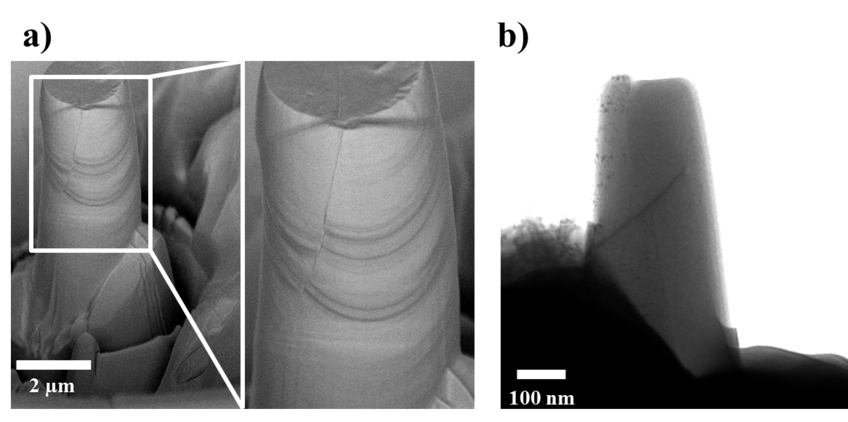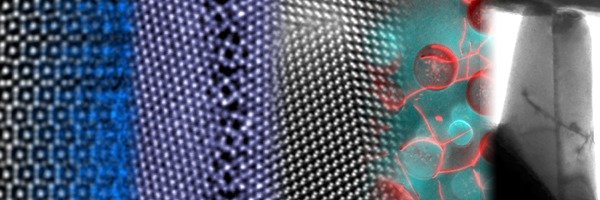
Influence of Ag segregation on grain boundary structures and dislocation-boundary interactions
Segregation of impurity atoms at grain boundaries (GBs) is known to influence the cohesion of these interfaces, thereby affecting the macroscopic behavior of the material either positively or adversely. Consequently, it is essential to understand the atomic structure of GBs as well as the interplay between segregation, structure and their impact on the material’s properties in order to design materials with superior physical performance.
This project studies Ag as solute segregate species in Cu, as it should be prone to GB segregation due to its low miscibility in the matrix. Different tilt grain boundaries are investigated and either fabricated by a tailored growth process or a more realistic boundary formation through thin film deposition.
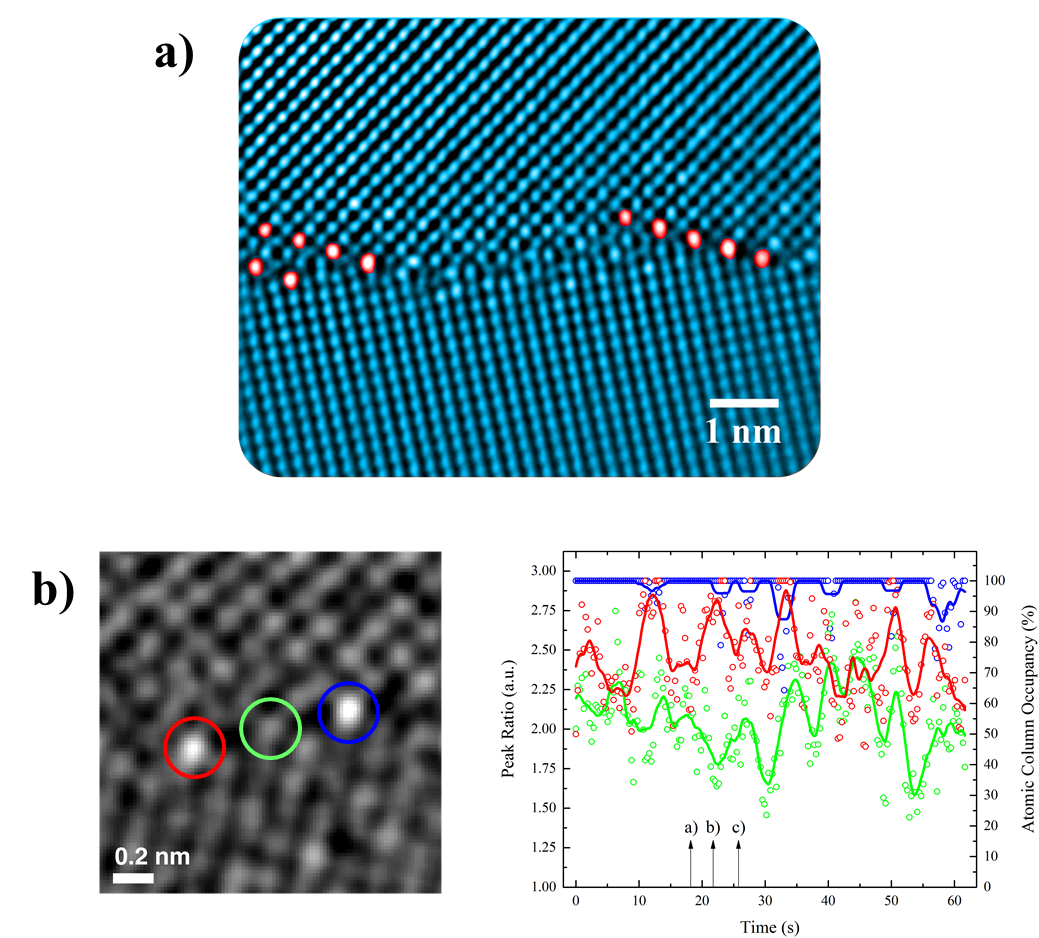
Structural investigations by aberration-corrected high-resolution STEM of an asymmetric tilt grain boundary in the S5 system revealed a structural transition from a rather flat towards a faceted boundary plane with preferential segregation towards newly formed symmetric facet segments (Fig. 1a). The stability of these segregated facets was further investigated by electron beam-induced atomic migration at the atomic scale and shown to be very stable (Fig. 1b)
Ongoing work is focusing on the influence of the observed structural grain boundary transition on the mechanical properties of such bicrystals in the presence of Ag. Therefore, in-situ nanocompression experiments are conducted inside the SEM to study size effects and slip system evolution during compression (Fig. 2a), as well as inside the TEM to visualize the interaction between individual dislocations and the grain boundary.
